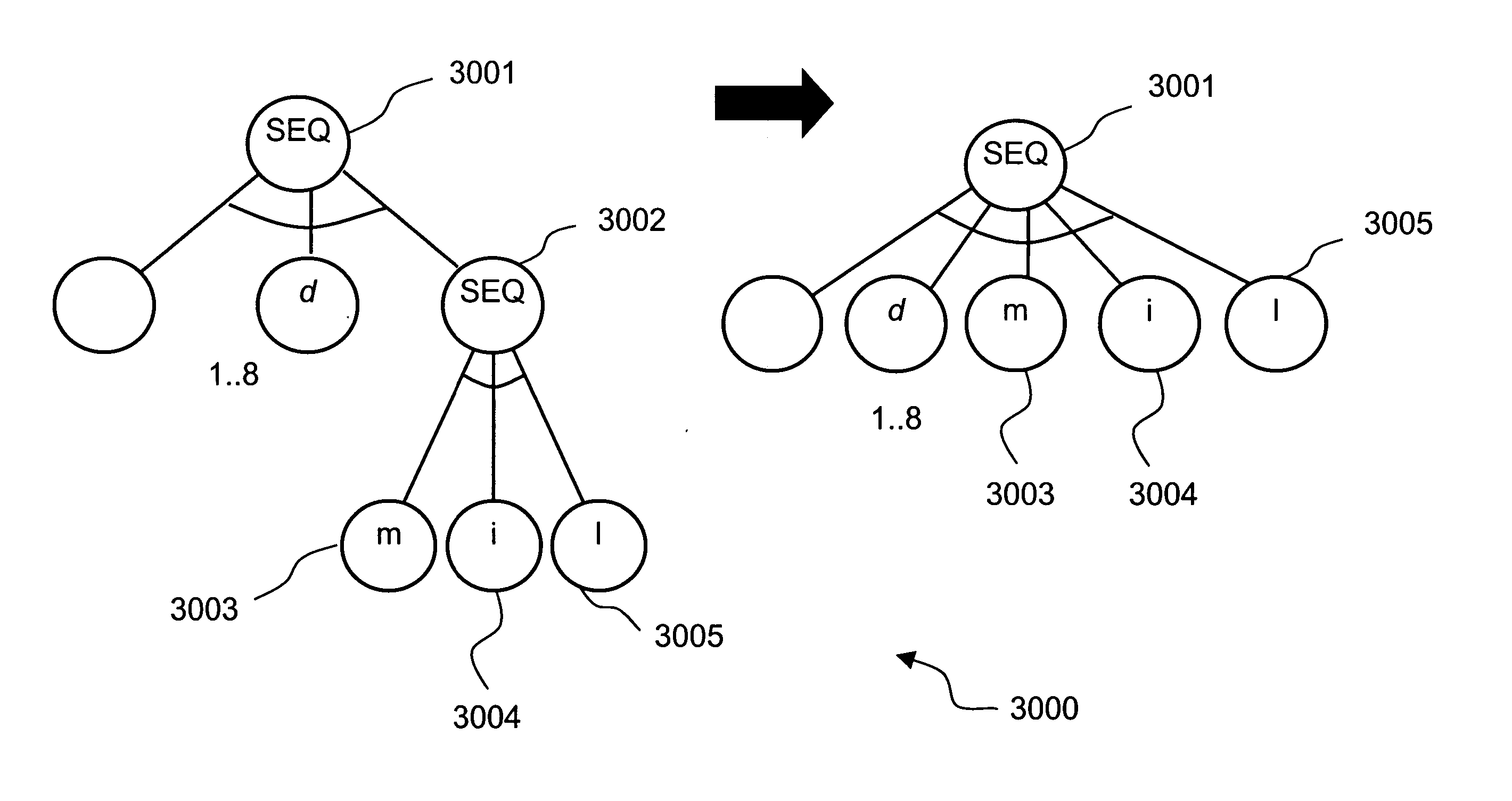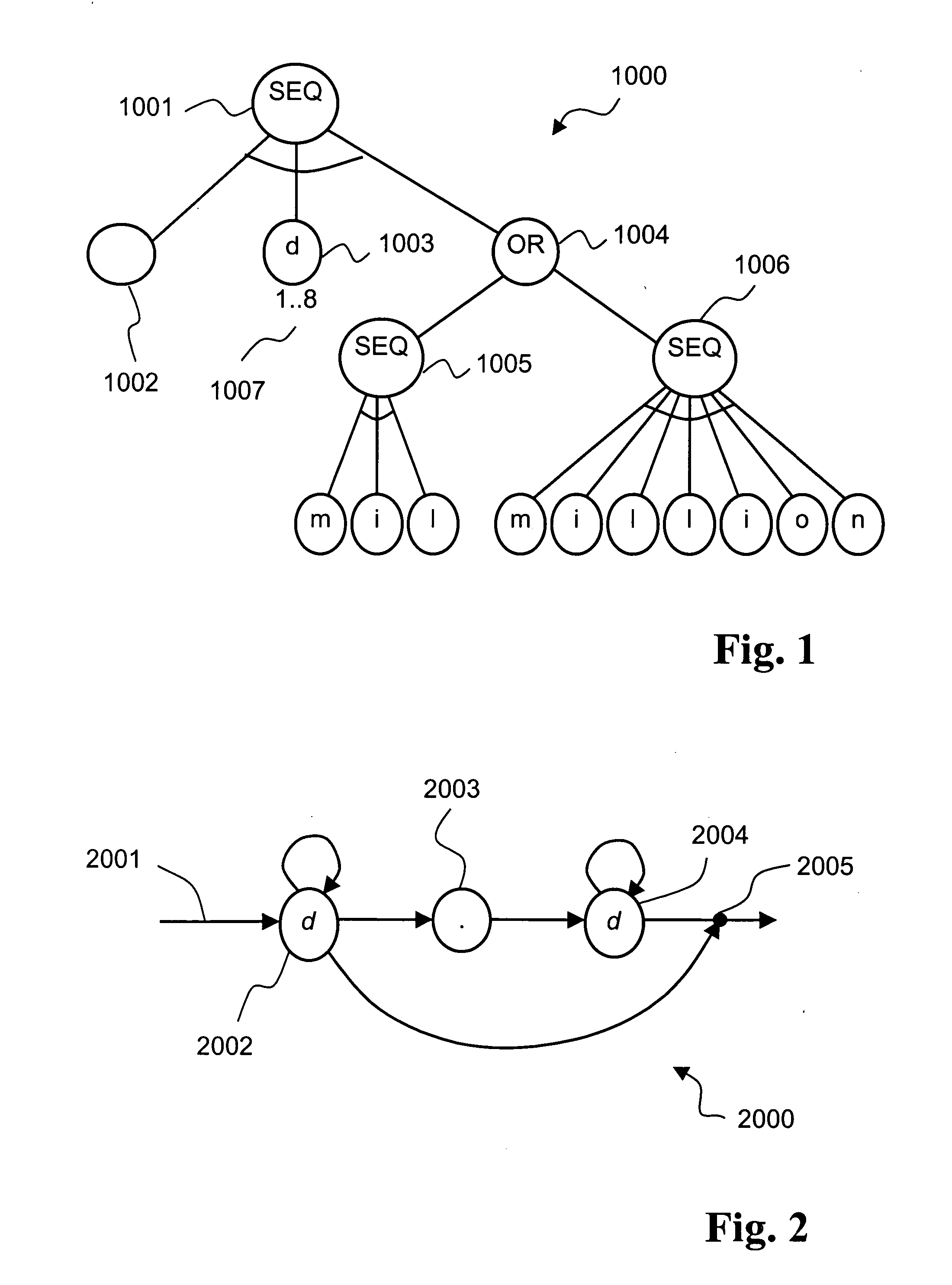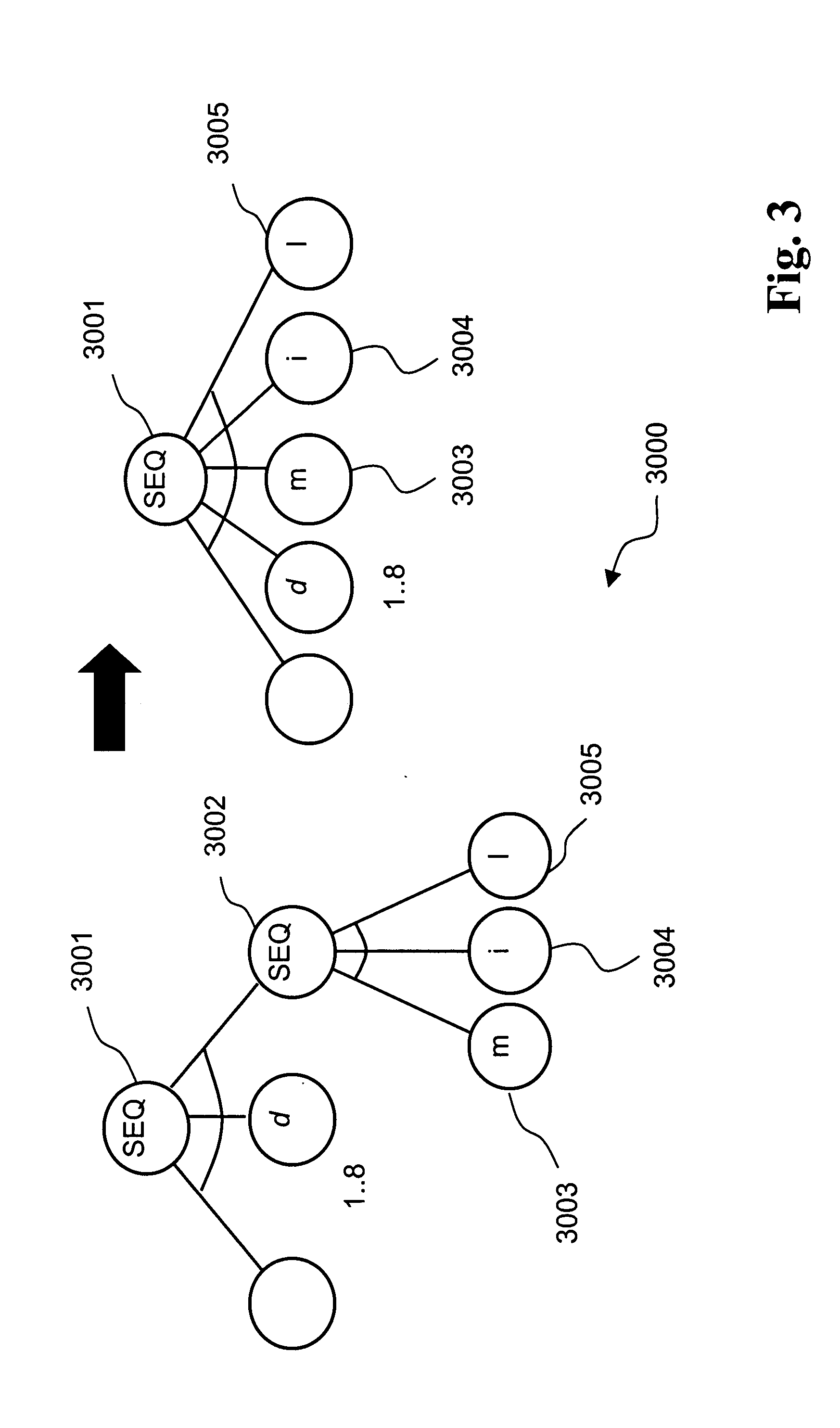Method for identifying composite data types with regular expressions
a composite data type and regular expression technology, applied in the field of automatic detection of data, can solve the problems of insufficient specificity of type, inability to analyze patterns, and inability to suit data types, and achieve the effect of accurate and efficient analysis of schemas and efficient analysis processes or methods
- Summary
- Abstract
- Description
- Claims
- Application Information
AI Technical Summary
Benefits of technology
Problems solved by technology
Method used
Image
Examples
example
The following is an example illustrating the operation of the regular expression tree analysis process described above. Consider the problem of identifying whether the regular expression “ / d{1,8}k?g” specifies a weight measurement. A regular expression tree 7000 representation of this expression is shown in FIG. 7. As the tree is already a fully flattened regular expression tree, no further trees need to be constructed. Assume that the (simplified) data format for weight measurements contains a single sub-format: (number)(unit weight) where “number” is an integer or a real number; and “unit weight” is one of “g”, “mg” or “kg”.
The FSMs representing “number” and “unit weight” are thus as shown in FIG. 2 and FIG. 8 respectively. By the procedure of FIG. 4A and FIG. 4B, the lists of state sequence pairs associated with a node 7002 of the regular expression tree 7000 are {(2002, 2002)} and {(2004, 2004)}. By the same procedure, nodes 7003 and 7004 each have a single list of state se...
PUM
 Login to View More
Login to View More Abstract
Description
Claims
Application Information
 Login to View More
Login to View More - R&D
- Intellectual Property
- Life Sciences
- Materials
- Tech Scout
- Unparalleled Data Quality
- Higher Quality Content
- 60% Fewer Hallucinations
Browse by: Latest US Patents, China's latest patents, Technical Efficacy Thesaurus, Application Domain, Technology Topic, Popular Technical Reports.
© 2025 PatSnap. All rights reserved.Legal|Privacy policy|Modern Slavery Act Transparency Statement|Sitemap|About US| Contact US: help@patsnap.com



